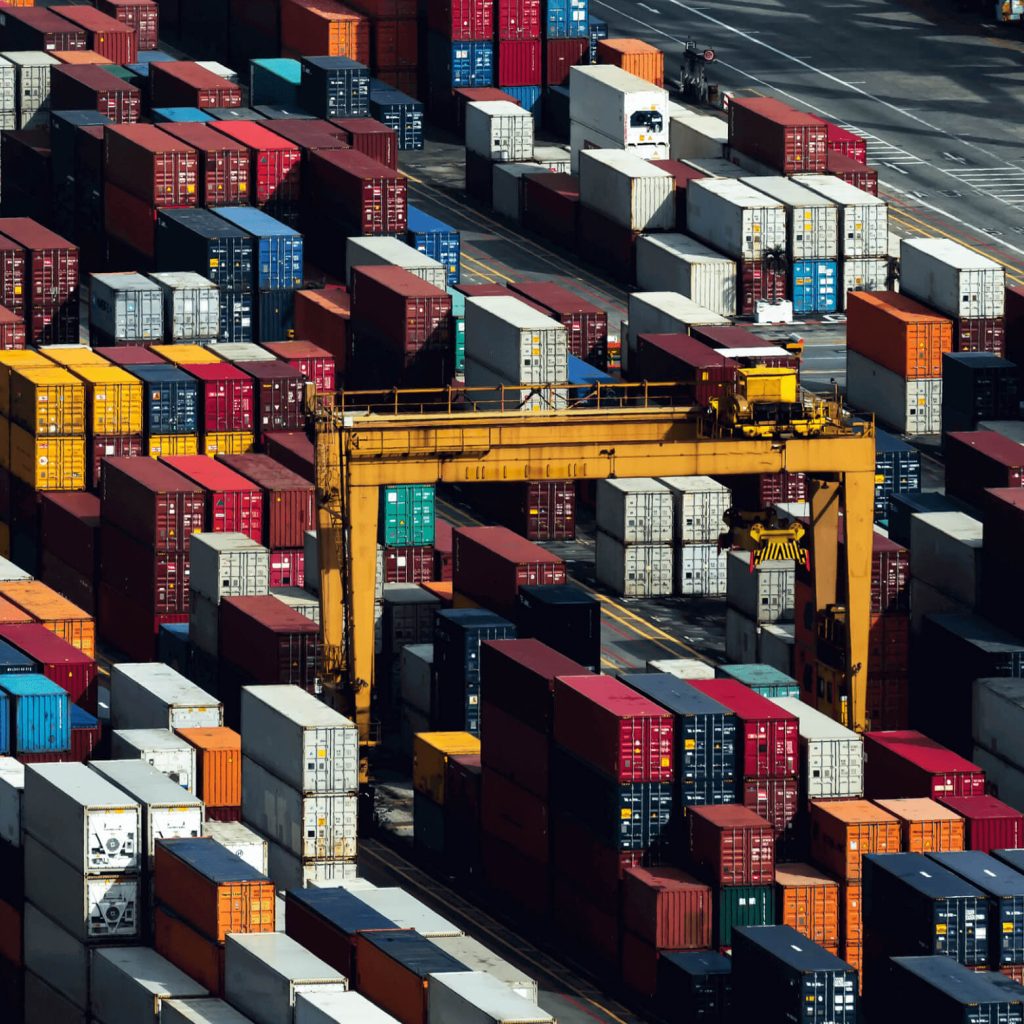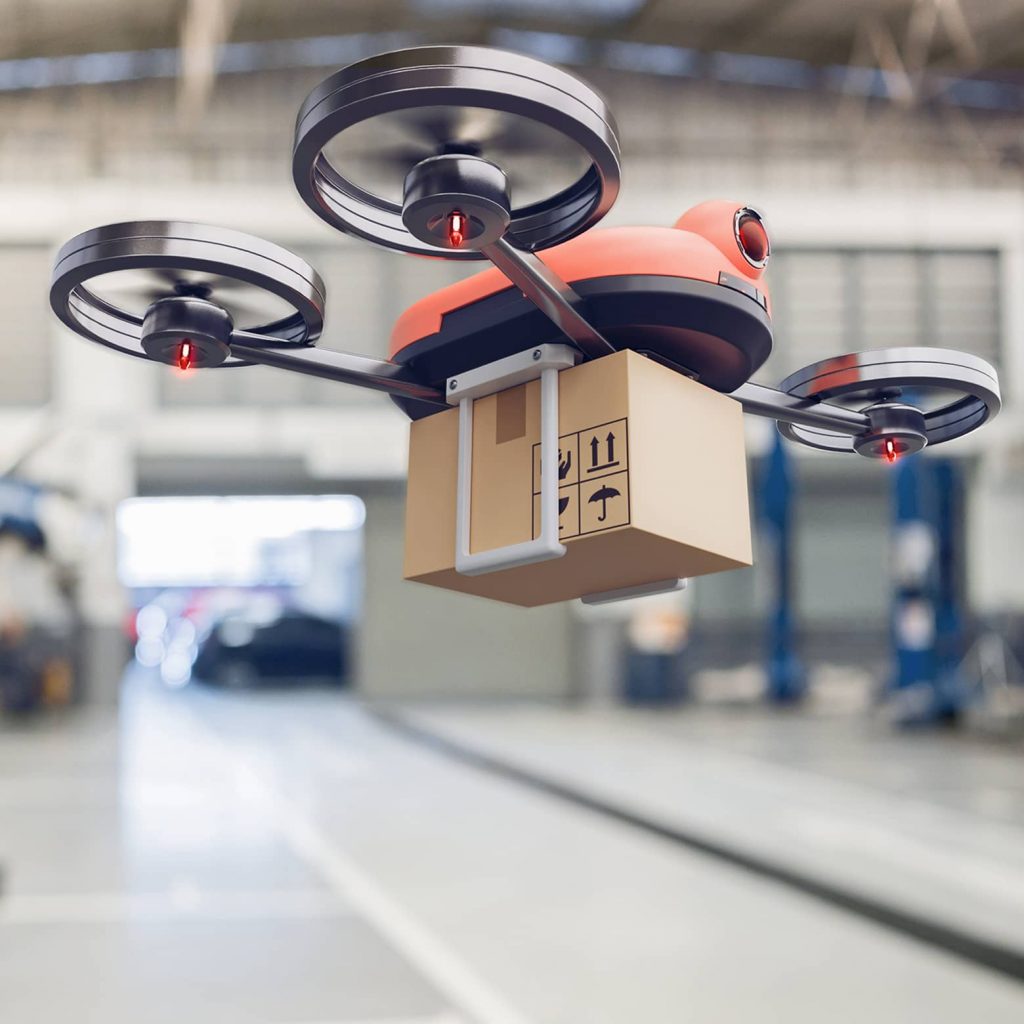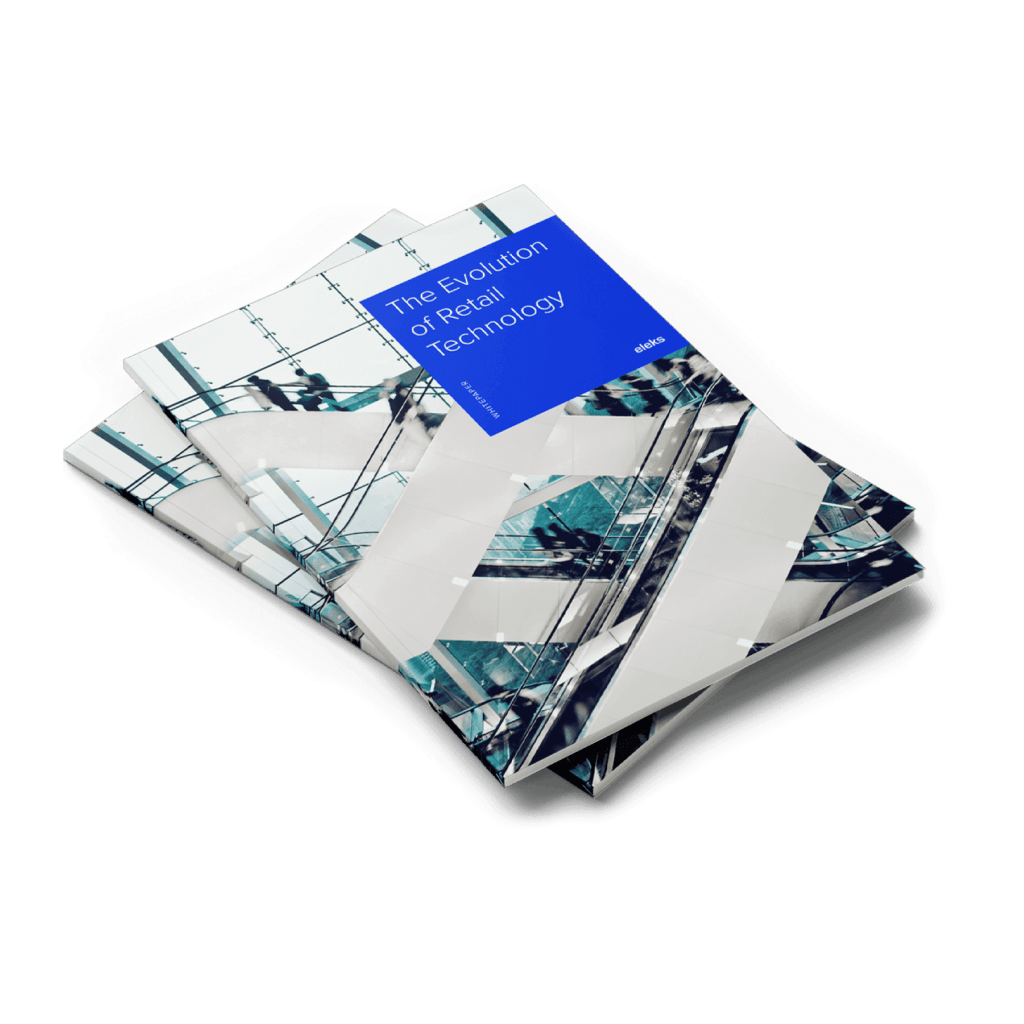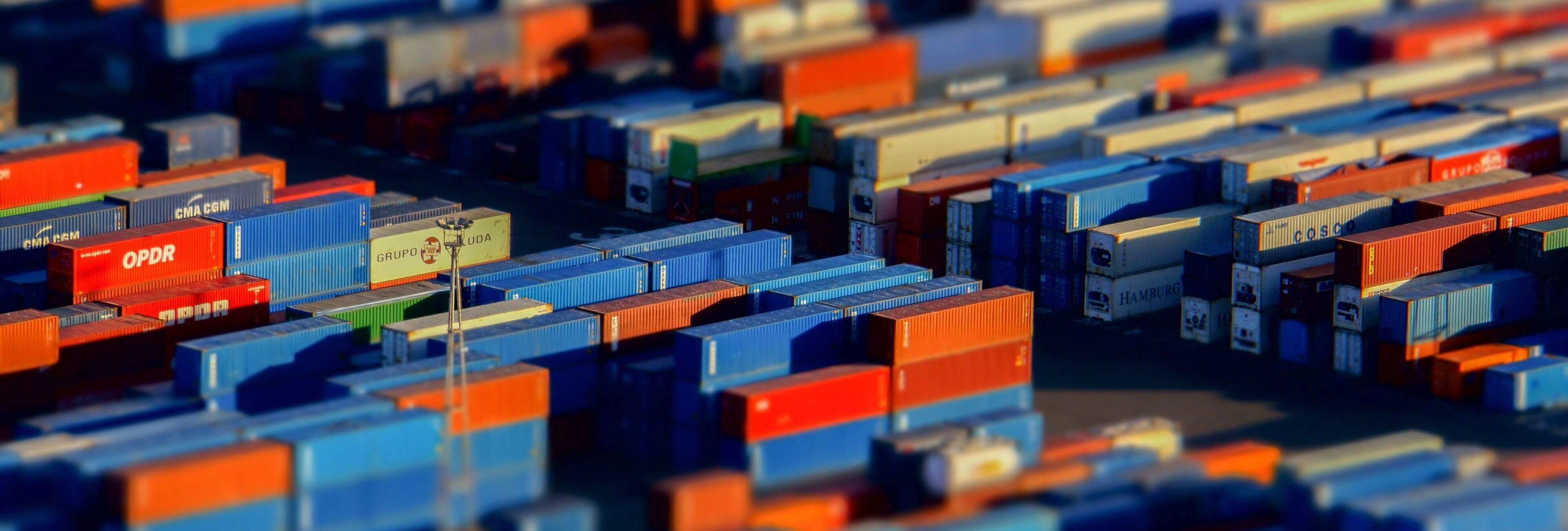Introducing the smart warehouse
Warehouse automation is not new, just as automated tools at home are not new. Yet the truly smart home is a recent phenomenon, and this is true for the smart warehouse too. Smart warehousing refers to the integration of existing automated systems into a more connected and integrated whole. Thanks to IoT software development, every item, every device, and every employee in a smart warehouse can be connected not only inside the warehouse but also to wider enterprise systems and the outside world.
IoT-powered single network allows you to process collected data instantly and use it to your advantage. Let’s take a closer look at what are the top benefits a smart warehouse brings to your table:
- Speed up turnaround time. Automated vehicles can define the shortest possible route for order delivery, facilitating the operation completion time. IoT-powered warehouse management system responds quickly to orders and can help managers to prioritise the most critical ones, thus greatly improve customer experience.
- Increase transparency and customer satisfaction. IoT sensors provide real-time information throughout the whole supply chain. It helps you to prevent potential problems, early detect an issue and act as soon as a problem arises. It also helps to keep your customers well-informed as they can get round-the-clock access to the data about the availability of the products, warehouse handling procedures, product’s storage temperature, etc.
- Boost efficiency and productivity. Manual processes automation reduces error risks, allows your staff to drop repetitive tasks and shift focus on more value-adding tasks. Innovative tech solutions, like smart glasses and voice guiding technologies, also help to train employees without interrupting the workday.
- Improve warehouse management. Based on the collected data, the smart warehouse system determines the frequency and amount of product orders. Thus, it enables to put such products in an easy and fast accessed place and can streamline warehouse processes.
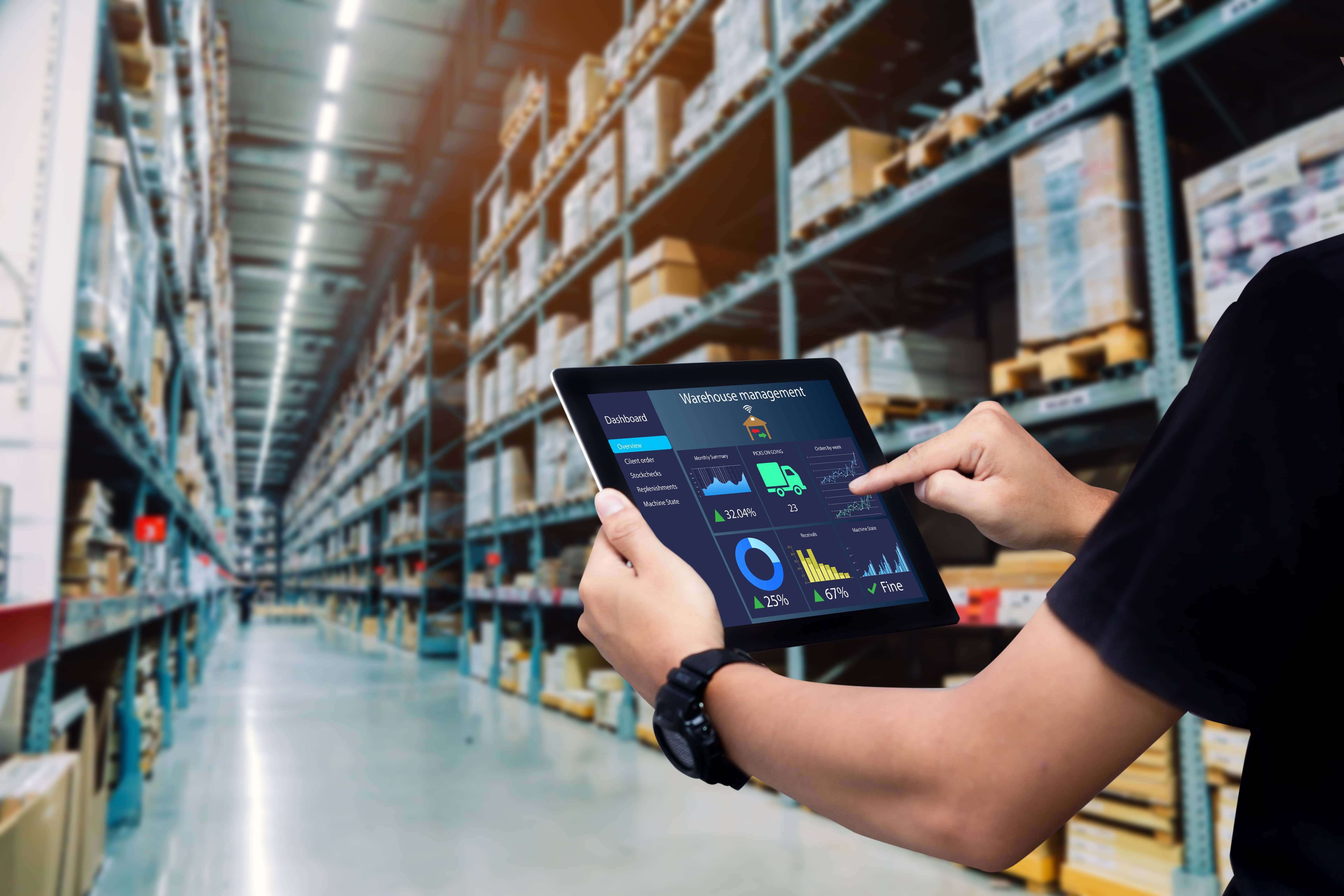
Practical use-cases of IoT in warehousing
The difficulty with applying a connected approach to a warehouse is this: the sheer number of individual items, pieces of equipment and individuals involved in warehouse operations.
IoT presents revolutionary optimisation opportunities because it removes any restrictions on quantity and volume: a warehouse can connect, monitor and manage an almost unlimited range of data points. All these factors are connected by robust IT infrastructure linked to your warehouse management system (WMS). Let’s look at some of the individual pieces of the IoT smart warehouse puzzle.
- Assets and inventory. Thanks to IoT a warehouse is always aware of the location of every moving part. Wi-Fi-capable sensors track the movement and use of assets across your facility. The same applies to inventory: shelf-fitted sensors and weighing devices can broadcast inventory information to your warehouse management system. The benefit for warehouses lies in that your team always know where equipment is, and what your inventory levels are. For example, expensive picking mistakes occur when inventory is not where it is supposed to be. IoT offers the opportunity to eliminate this time-wasting error.
- Wearable devices. DHL has implemented wearable IoT devices to monitor the health of its employees in an effort to support employee health and safety. DHL’s network of IoT devices taps into its smart warehouse system, processing data to suggest rest periods and to watch against fatigue. Warehouses are vast operations with workers in spread-out locations, in contrast to a closely-clustered office floor. Thanks to IoT it is easier to gather knowledge about your workers to improve efficiency and safety. IoT devices can also be used to monitor employee performance as long as privacy concerns are taken into account. And after the pandemic outbreak, companies have started to use IoT wearables to ensure social distancing between their employees. For instance, Amazon uses a smart device, which signals employee about breaching safe distance.
- Warehouse robotics. The warehouse knowledge and insight that IoT brings means that robotic automation is becoming increasingly prominent inside the smart warehouse. Indianapolis fashion company Lids was an early adopter, using IoT-enabled robots to do the picking and packing previously done by humans. This robotized, connected approach means warehouses can use human effort where it is most valuable. IoT lets machines take over the mindless, repetitive tasks warehouses are known for. COVID-19 has also facilitated the use of robot technologies in warehouses. According to PitchBook report, warehouse robotics investment increased by 57% in 2020 as compared to the same period last year. IoT-powered robots help to continue business operations, reduce interactions between employees and sanitise the workplace to mitigate the risk of infection.
- Digital twin. According to MarketAndMarkets research, global digital twin market, which estimated at $3.1 billion in 2020, is going to reach $48.2 billion in 2026. Digital twin technology assembles a model of an infrastructure asset or system of assets which simulates optimised use and maintenance of that asset. Digital twin help to digitally recreate warehouse layout, its everyday operations and find an optimal solution to improve key performance indicators. Thus, a digital simulation replaces time-consuming and costly real-life experiments and allows companies to make data-driven decisions, enhance processes optimisation and predict company evolution.
IoT requires a technology infrastructure
IoT devices offer an enormous amount of raw capability, but harvesting this capability requires a concerted effort. To enjoy the gains and benefits that IoT brings to the smart warehouse your business must be engaged with a technology partner which knows how to exploit the potential of IoT devices. An experienced vendor can build a smart development team to help you design and implement your IoT solution.
It’s clear from the above examples that IoT is transforming the way warehouses function. ELEKS has deep experience in transformative technologies across the logistics industry.
Ready to embrace what IoT can do for your warehouse? Contact us to arrange an insightful consultation that will transform your business.
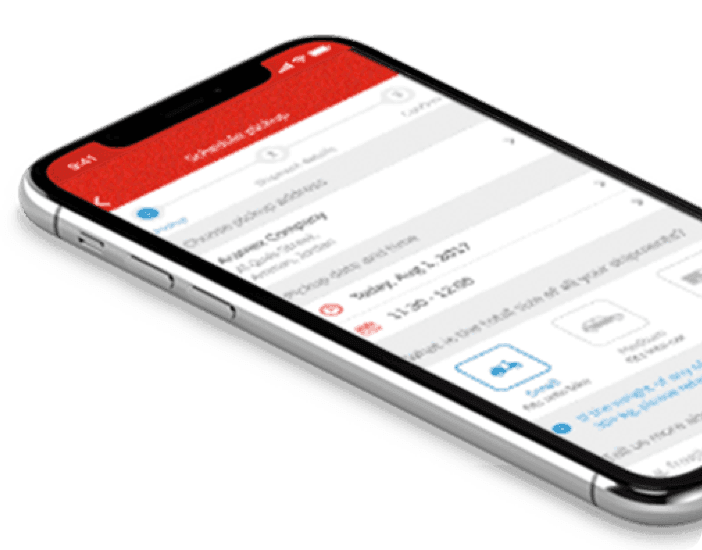
Related Insights

